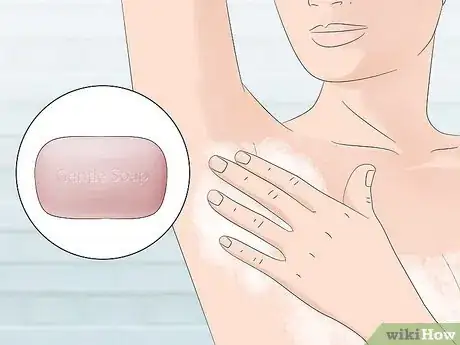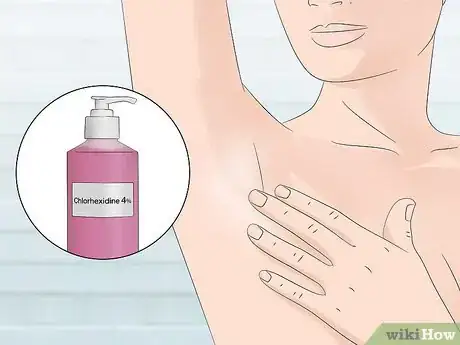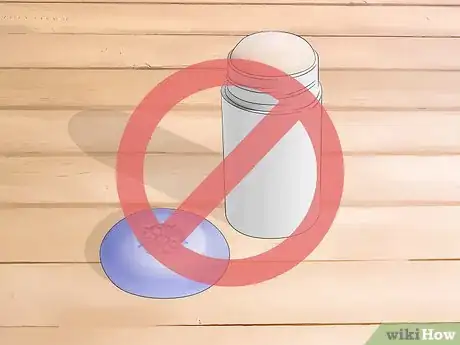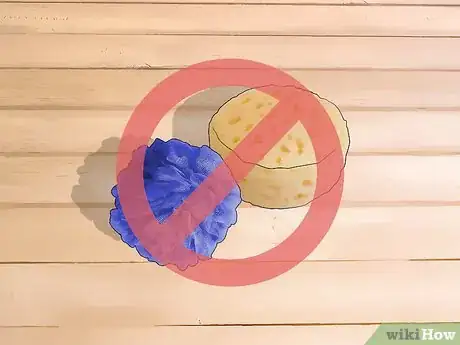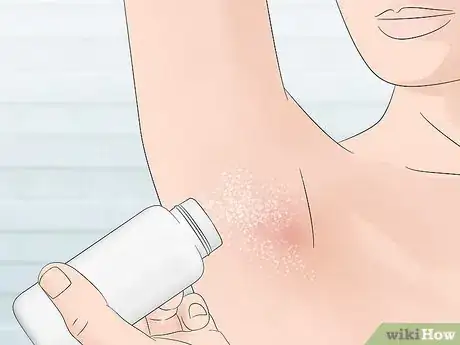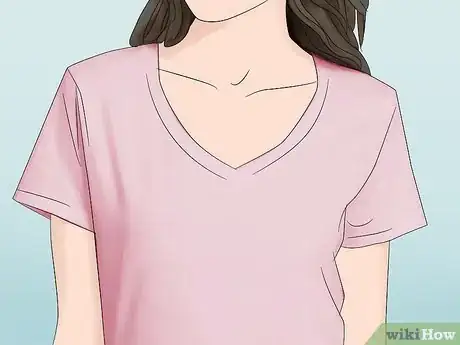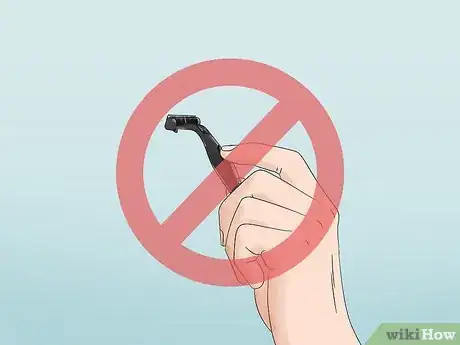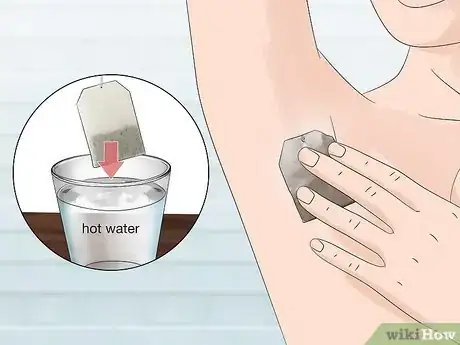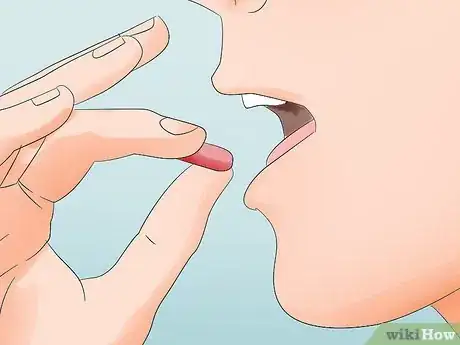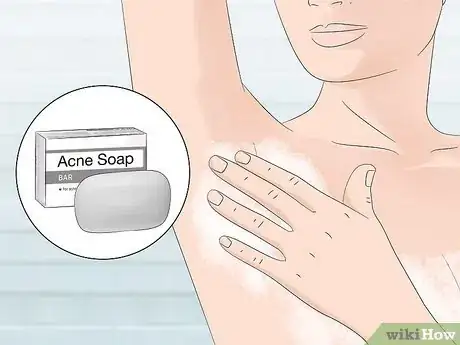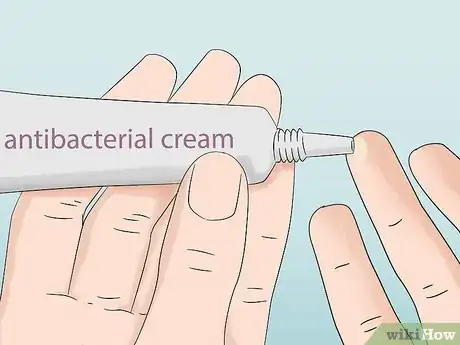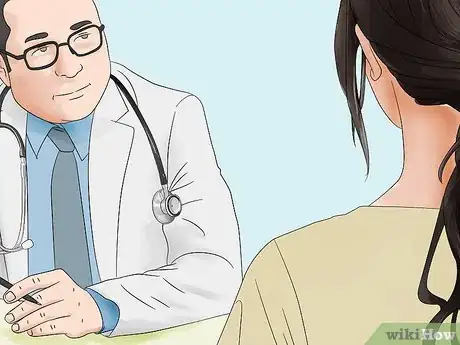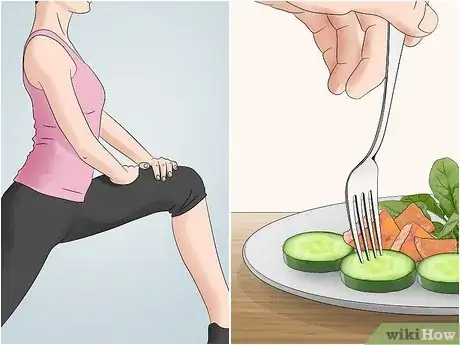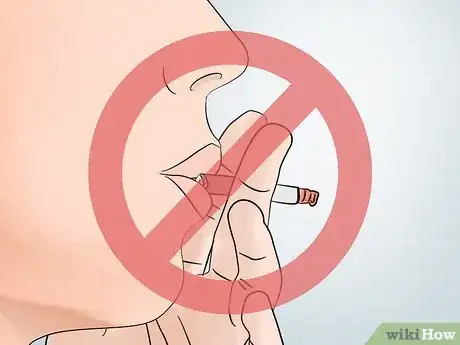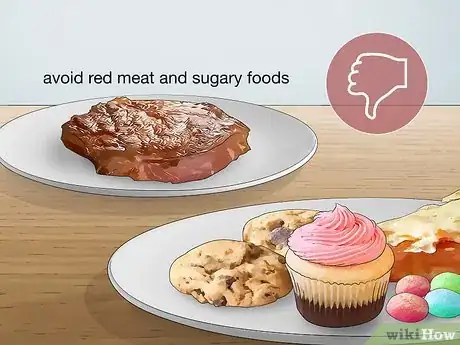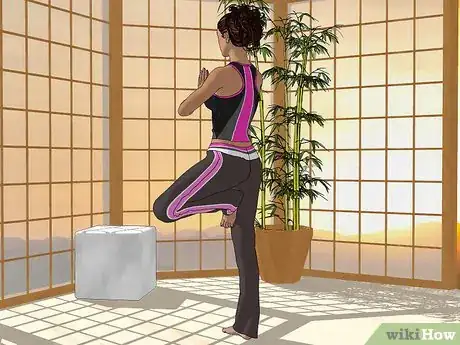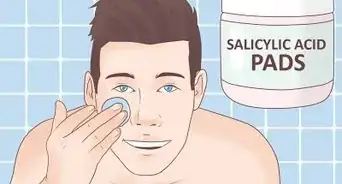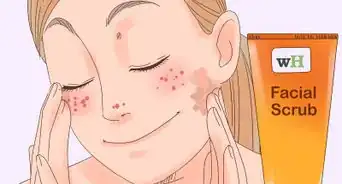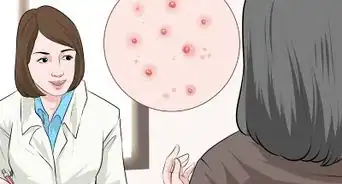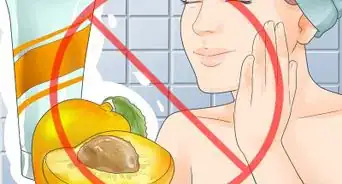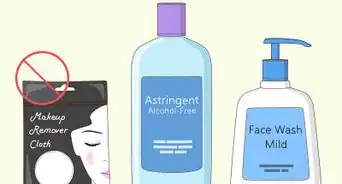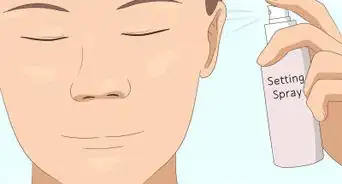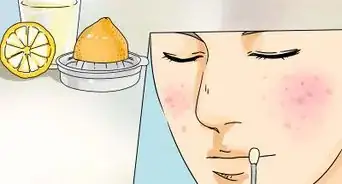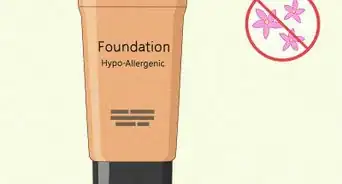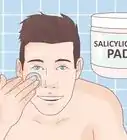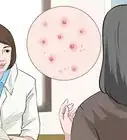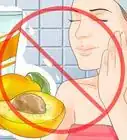This article was co-authored by Navid Malakouti, MD, FAAD. Dr. Navid Malakouti is a Board Certified Dermatologist specializing in cosmetic dermatology, dermatologic surgery, and medical dermatology. He treats patients of all ages for conditions like acne, rosacea, psoriasis, skin cancer, botox, fillers, lasers, and chemical peel. Dr. Malakouti is a Diplomate of the American Board of Dermatology, Fellow of American Academy of Dermatology, American Society for Dermatologic Surgery, and American Society for Laser Medicine and Surgery, and a member of the Skin of Color Society. He holds a BS in Biochemistry and Cell Biology from The University of California, San Diego and an MD from The Virginia Commonwealth University School of Medicine. He completed his Dermatology residency in Washington D.C. at Howard University, VA Medical Center, Children's National Hospital, and the National Institutes of Health.
There are 11 references cited in this article, which can be found at the bottom of the page.
This article has been viewed 46,332 times.
Pimples and acne are always annoying, but they can be a particular pain if they happen in your armpits. The friction from your clothes and skin makes breakouts here especially uncomfortable. Armpit pimples could just be a simple case of acne or a random ingrown hair, or it might be a condition called hidradenitis suppurativa (HS), which causes pimple-like breakouts in your arms, groin, buttocks, and breasts.[1] This might sound scary, but don’t worry! You can handle minor and serious cases of armpit pimples with some sanitary and lifestyle changes. Whether your armpit pimples are from simple acne or HS, these tips can help you get rid of them.
Steps
Practicing Good Armpit Care
-
1Wash your armpits with gentle soap. Following generally good hygiene could help clear existing breakouts and prevent future ones. Wash your armpits with gentle soap or cleanser when you bathe to keep the area clean and free of acne-causing bacteria.[2] [3]
- Don’t scrub your armpits or rub hard. This could irritate the pimples and make them worse.
- A non-soap cleanser like Cetaphil may be gentler on your skin, so try switching to a product like this if regular soap irritates you.[4]
-
2Try an antiseptic wash to clean your skin if regular soap doesn’t help. If bacterial infections are causing your pimples, then a stronger cleaner might work better. Try using an antiseptic like 4% chlorhexidine daily to see if this helps prevent more pimples.[5]
- Antiseptics like chlorhexidine can be a little harsh on your skin if you aren’t used to them. Start off using it once a week in the beginning to make sure it doesn’t irritate your skin, then start using it more often. Work your way up to using it daily.[6]
- If you need a recommendation for a good antiseptic cleanser, ask your dermatologist for the best options.
Advertisement -
3Avoid fragranced soaps or deodorants. Fragrances and perfumes can irritate your skin and might trigger breakouts. It’s best to use fragrance-free soaps and deodorants, and also keep perfume away from your armpits. This might help prevent more irritation.[7]
- Make sure all the products you use are labeled “Fragrance-Free.” It helps to use hypoallergenic products designed for sensitive skin. These should be the least irritating.
-
4Don’t use a sponge or loofah in your armpits. You might be tempted to scrub your armpits hard to keep them as clean as possible, but this is a mistake! Scrubbing the area hard can make breakouts worse or clog your pores and cause more pimples. Just use your hands and some soap to wash your armpits. This will keep the area plenty clean.[8]
- The other problem with loofahs and washcloths is that they tend to trap bacteria, which could cause more pimples.[9]
-
5Apply powder to your armpits after bathing. Keeping your armpits dry might also help prevent breakouts. When you’re done bathing, put some powder under your arms to soak up any excess moisture and keep the area dry throughout the day.[10]
- You can use plain powder or a medicated type like zinc oxide.
-
6Wear loose-fitting clothes to prevent friction in your armpits. Tight clothes can trap sweat and dirt on your skin, and the increased friction could trigger more breakouts. Try wearing looser shirts that don’t rub on your armpits to see if this helps.[11]
- If you often get pimples in other places like your back or groin, then wearing loose-fitting clothes that don’t rub on these spots can also help.
-
7Stop shaving if you have a breakout. If you shave your armpits, you might be causing pimples or making them worse. If you have a breakout, then stop shaving until it clears up. This should prevent irritation and ingrown hairs in your armpits.[12]
- If you want to get rid of armpit hair, talk to your dermatologist about permanent or long-term hair removal.
- Avoid razor bumps by shaving with a sharp razor and using proper shaving cream.[13]
Relieving Pain and Discomfort
-
1Hold a warm compress onto the pimples. Take a clean washcloth and soak it in hot water. Wring out the extra water, and make sure it’s cool enough to press onto your skin without any pain. Then hold it onto your armpit pimples for 10 minutes at a time to relieve the pain.[14]
- Make sure the washcloth you use is clean. A dirty one could spread bacteria and cause more pimples.
- Always test the washcloth to make sure it’s cool enough first so you don’t get burned.
-
2Try using a tea bag to reduce pain. This sounds weird, but it’s an effective home remedy for treating pain from pimples. Boil some water, then steep a normal teabag in the water for 1 minute. After that, take the teabag and press it against your pimples for 10 minutes at a time.[15]
- Always make sure the teabag is cool enough before pressing it onto your skin. Otherwise you could get burned.
- Any type of tea should work for this, so don’t try to find a special kind.
-
3Take pain relievers if you’re very uncomfortable. Pimples in your armpit can be painful, and home remedies might not do the trick for you. This is okay, and you can take care of the pain with some over-the-counter pain relievers.[16] Take all pain medication according to the product instructions so you don’t use too much.
- OTC pain relievers should be enough for most people, but if you’re in a lot of pain, your dermatologist can prescribe something stronger.
Trying Medical Treatments
-
1Wash your armpits with acne soap. Acne soap isn’t just for your face. Specialized acne soaps are designed to clear pimples and prevent new breakouts. When you visit your dermatologist, they may recommend using acne soap in your armpits. Replace your normal soap with acne cleansers to see if it helps clear your pimples.[17]
- Some acne soaps are available over the counter, and some need a prescription. Use the one that your dermatologist recommends.
-
2Fight the infection with antibacterial creams. This is a common treatment for acne and HS, and your dermatologist will probably prescribe it to clear your pimples. Antibacterial creams can reduce inflammation and get rid of the bacteria that might cause more breakouts. Apply these creams according to your dermatologist’s instructions to help your skin heal.[18] [19]
- Common topical antibacterial are clindamycin and gentamicin. Your dermatologist might prescribe one of these, or a different one.
- For more serious cases, your doctor may also try prescribing oral antibiotics to fight the infection.
- Check with your doctor to make sure no rare underlying diseases are causing the pimples (like hidradenitis suppurativa).[20]
-
3Take steroid medication to control the inflammation. For more serious cases of HS, the dermatologist may try retinoids or corticosteroids. These medications reduce swelling and inflammation, and could help treat breakouts.[21]
- Steroid medications are usually taken orally, but your dermatologist may also try a topical cream. You would rub this into your armpit like any other cream. There are also injection types for very severe inflammation.
-
4Fix damage from HS with minor surgical procedures. In rare cases, severe HS could cause scarring or tunneling in your skin. This sounds bad, but the problem is fixable. If you do have skin damage from repeated HS breakouts, talk to a dermatologist. They might recommend one of the following treatments to heal your skin.[22]
- Unroofing is a procedure that removes scar tissue to help tunnels under your skin heal. It can help with moderate to severe HS cases. There are also limited procedures for single nodules or cysts.
- Individual cysts or growths can be surgically removed in a simple procedure.
- Laser therapy could help clear up individual nodules or lesions from HS.
- For very severe cases, the dermatologist can remove all of the infected skin and perform a skin graft to heal the area.[23]
Reducing Breakouts with Lifestyle Tips
-
1Lose weight to prevent breakouts. Being overweight can trigger many types of acne, and it particularly raises your risk for HS. If you’re overweight, then start following a diet and exercise routine to get down to a healthy weight. People with HS usually experience fewer breakouts after they lose weight.[24]
- If you start an exercise regimen, remember to shower as soon as possible when you’re done! Sweat buildup can cause irritation and pimples.
- If you aren’t sure what a healthy bodyweight is for you, talk to your doctor to come up with a weight-loss plan.
-
2Quit smoking or don’t start in the first place. Smoking is another major risk factor for HS, and it can make your symptoms much worse. If you smoke, then quitting as soon as possible is the best choice. If you don’t smoke, then avoid starting at all.[25]
- Besides acne and HS, smoking is linked to all kinds of other health risks. You’ll be benefiting your health overall by quitting.[26]
-
3Follow a healthy diet. It’s possible that your diet could be causing your acne or HS breakouts as well. High amounts of dairy, red meat, and sugary foods with a high glycemic index (GI) could put you at a higher risk for breakouts, so try limiting these foods in your diet.[27]
- A diet with low-GI foods and less dairy could help prevent acne in other places as well. However, good skincare is overall the best treatment.[28]
-
4Reduce stress to prevent breakouts. Stress is also linked to acne breakouts and could make HS worse. If you often feel stressed out, then taking some steps to reduce it can be a big help.[29]
- Relaxation exercises like meditation, yoga, or deep breathing can release stress and anxiety. Make some time each day for one of these activities.
- Doing things you enjoy is also a great way to reduce stress, so remember to leave time for your hobbies as well.
References
- ↑ https://www.mayoclinic.org/diseases-conditions/hidradenitis-suppurativa/symptoms-causes/syc-20352306
- ↑ Navid Malakouti, MD, FAAD. Board Certified Dermatologist. Expert Interview. 19 July 2021.
- ↑ https://myhealth.alberta.ca/Health/aftercareinformation/pages/conditions.aspx?hwid=abr6636&
- ↑ https://www.mayoclinic.org/diseases-conditions/hidradenitis-suppurativa/diagnosis-treatment/drc-20352311
- ↑ https://www.nhs.uk/conditions/hidradenitis-suppurativa/
- ↑ https://www.mayoclinic.org/diseases-conditions/hidradenitis-suppurativa/diagnosis-treatment/drc-20352311
- ↑ https://www.nhs.uk/conditions/hidradenitis-suppurativa/
- ↑ https://www.mayoclinic.org/diseases-conditions/hidradenitis-suppurativa/diagnosis-treatment/drc-20352311
- ↑ https://goaskalice.columbia.edu/answered-questions/washcloths-loofahs-scrubbers-bacteria/
- ↑ https://www.mayoclinic.org/diseases-conditions/hidradenitis-suppurativa/diagnosis-treatment/drc-20352311
- ↑ https://www.aad.org/public/diseases/a-z/hidradenitis-suppurativa-self-care
- ↑ https://www.aad.org/public/diseases/a-z/hidradenitis-suppurativa-self-care
- ↑ Navid Malakouti, MD, FAAD. Board Certified Dermatologist. Expert Interview. 19 July 2021.
- ↑ https://www.aad.org/public/diseases/a-z/hidradenitis-suppurativa-self-care
- ↑ https://www.aad.org/public/diseases/a-z/hidradenitis-suppurativa-self-care
- ↑ https://www.mayoclinic.org/diseases-conditions/hidradenitis-suppurativa/diagnosis-treatment/drc-20352311
- ↑ https://www.aad.org/public/diseases/a-z/hidradenitis-suppurativa-treatment
- ↑ Navid Malakouti, MD, FAAD. Board Certified Dermatologist. Expert Interview. 19 July 2021.
- ↑ https://www.mayoclinic.org/diseases-conditions/hidradenitis-suppurativa/diagnosis-treatment/drc-20352311
- ↑ Navid Malakouti, MD, FAAD. Board Certified Dermatologist. Expert Interview. 19 July 2021.
- ↑ https://www.nhs.uk/conditions/hidradenitis-suppurativa/
- ↑ https://www.mayoclinic.org/diseases-conditions/hidradenitis-suppurativa/diagnosis-treatment/drc-20352311
- ↑ https://www.aad.org/public/diseases/a-z/hidradenitis-suppurativa-treatment
- ↑ https://www.aad.org/public/diseases/a-z/hidradenitis-suppurativa-self-care
- ↑ https://www.nhs.uk/conditions/hidradenitis-suppurativa/
- ↑ https://www.cdc.gov/tobacco/basic_information/health_effects/index.htm
- ↑ https://www.mayoclinic.org/diseases-conditions/hidradenitis-suppurativa/diagnosis-treatment/drc-20352311
- ↑ https://www.aad.org/public/diseases/acne/causes/diet
- ↑ https://familydoctor.org/condition/hidradenitis-suppurativa/
